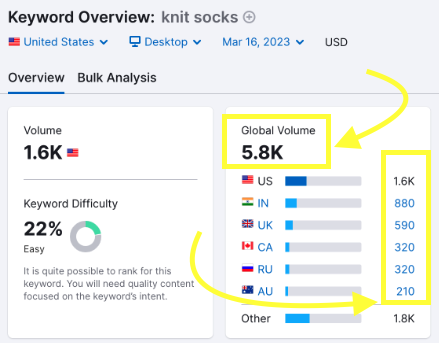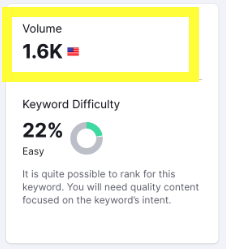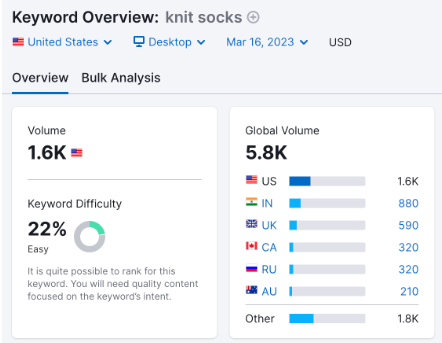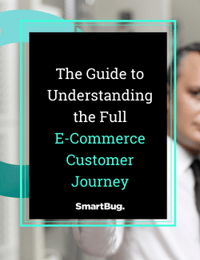
By Kira Renee
In today's digital age, having an e-commerce website for your business is no longer an option—it's a necessity. However, just having an online store is not enough to succeed in the highly competitive world of e-commerce.
To truly stand out and attract customers, you need to have a strong SEO strategy in place. Search engine optimization, or SEO, can improve your e-commerce website's visibility on search engines like Google, increase traffic, and ultimately drive more sales.
In this article, we'll explore effective SEO techniques you can implement to boost e-commerce sales and stay ahead of the competition. Whether you're a new online retailer or an established brand, this guide will provide actionable tips to maximize your e-commerce website's potential and reach your sales targets.
Why is SEO for e-commerce important?
SEO is the process of improving your website's visibility and rankings within a search engine's results pages (SERPs). The goal is to increase organic traffic to your website based on common search queries that users may be looking for. For example, if a user is searching Google for “knit socks,” you can optimize your product and website pages with that keyword along with other related keywords so that your brand's knitted sock collections show up at the top of Google search results.
The e-commerce landscape is growing, which means hundreds of brands are selling products similar to yours. You must make sure you are telling your unique brand story to the right customers, identifying the keywords and phrases your future customers may look up, and getting your brand and products in front of the right people at the right time.
According to studies, 49 percent of shoppers use Google to discover a new product. The challenge is making sure your products are easily discoverable. Seventy-five percent of users never scroll past the first page of search engine results, which means it’s key to ensure your products appear within the first search results page to increase traffic and sales. That’s where keyword research comes in.
How do I identify keywords?
Your brand needs to define target keywords that your customers are most likely to use when searching for your products and that have the best opportunity to rank on the first page.
There are many creative ways you can research possible keyword ideas. Some of the most popular include:
-
Performing a competitive analysis using a tool like Semrush that identifies which keywords are generating traffic for products similar to yours
-
Analyzing search queries you believe potential customers may be looking up, and reviewing the results
How do I decide which keywords to target?
Once you have identified a list of potential keywords, it’s time to define which keywords have the best opportunity for ranking on the first page. To find that out, you’re going to look at two things: search volume and difficulty.
Let’s research the keyword “knit socks” and analyze the data to determine if this keyword presents a ranking opportunity.
1. Search Volume
Search volume will tell you how many monthly searches that keyword has on average. This will help you understand if it’s a popular keyword or has enough audience for you to get your products in front of.

The keyword “knit socks” has a 5.8K monthly global search volume which tells us there is an opportunity for reach. Depending on your brand, you may be targeting specific countries or regions. In that case, you can see a breakdown of search volume by country to further identify if this keyword is a good opportunity for your brand.
2. Difficulty Percentage
The difficulty of a keyword will help you determine how competitive you need to be to get to that first-page ranking. For newer websites, you should look for opportunities with a lower difficulty of 40 percent or less. If your website has a decent domain authority, you can also identify some target keywords with a higher range of 40-70 percent.

The difficulty on this keyword is 22 percent, which is very attainable for most websites as long as you have a high-quality SEO strategy in place.

Looking at the search volume combined with the keyword difficulty percentage, we can tell there is a high volume of searches and low competition to be one of the top-ranking results. We should add this to our target keyword list because there is a good opportunity to rank for this keyword.
How do I optimize my website?
You have successfully identified your target keywords, and now it’s time to implement them. There are many ways you can include your target keywords on your website through on-page optimization and content marketing.
On-Page Optimization
On-page SEO refers to the process of optimizing individual web and product pages on a website with keywords and best practices in order to rank higher. Title tags, meta descriptions, header tags, product descriptions, and product categories are all important aspects of on-page SEO for e-commerce websites.
Meta Descriptions
Meta descriptions provide a brief summary of a webpage’s content in search engine results pages. Optimizing meta descriptions with your target keywords can improve click-through rates and drive more qualified traffic to the website.
Title Tags and Header Tags
Title tags and header tags (H1, H2, H3, and so on) are HTML elements that specify the page title, headings, and subheadings of a webpage. Optimizing header tags with target keywords helps search engines understand the webpage's content and structure. Header tags also improve user experience by making the webpage's content more scannable and easy to read. Title tags appear as clickable links in search engine results pages, so optimizing them can help improve click-through rates and drive more organic traffic to the website.
Product Descriptions
Product descriptions provide details about a product's features, benefits, and specifications. Optimizing product descriptions with target keywords and relevant information can improve the webpage's relevance and ranking for specific search queries. Well-written product descriptions can also improve user experience and increase the likelihood of a purchase.
Product Categories
Product categories organize products on an e-commerce website and make it easier for users to find what they are looking for. Optimizing product categories with relevant keywords and clear navigation can improve the website's structure and user experience. It also makes it easier for search engines to crawl and index the website's content, which elevates the website's search engine ranking.
Optimized Images
Optimize images for SEO by compressing file sizes and using alt tags to describe images and include keywords when appropriate. This helps search engines understand the content of your images.
Mobile Optimization
Sixty-one percent of Google searches are done with a mobile device. This means a large portion of your customers are most likely shopping on mobile. So, it’s important to optimize your website for mobile users to make the shopping and checkout experience as easy and efficient as possible.
Content Marketing
To build more internal links and ranking opportunities, you can begin developing a content marketing strategy.
Content marketing involves creating high-quality, engaging, and relevant content that provides value to users and satisfies their search queries for that keyword. This content can be a blog post, product details, and buying guides—even product reviews can support your keyword rankings.
Optimizing your content with keywords and using on-page SEO techniques will begin generating more organic traffic and ultimately drive more sales.
If you need help strategizing the right content with the right keywords, SmartBug® can help! Our e-commerce strategists work with clients to identify their unique target keyword opportunities and develop a comprehensive SEO strategy to reach their traffic and sales goals.
Chat with us to learn how we can help!
About the author
Kira Renee Kira was formerly our Product Marketing Manager at SmartBug. She believes in a people-first and data-driven marketing approach. Previously working with many reputable brands, building their online brand presence and teaching companies how to enhance their marketing strategy to be customer-centric. When she's not creating a stellar marketing strategy, you can find her enjoying a crisp sour beer surrounded by her hundreds of plants and receiving cuddles from her Labradoodle. Read more articles by Kira Renee.









